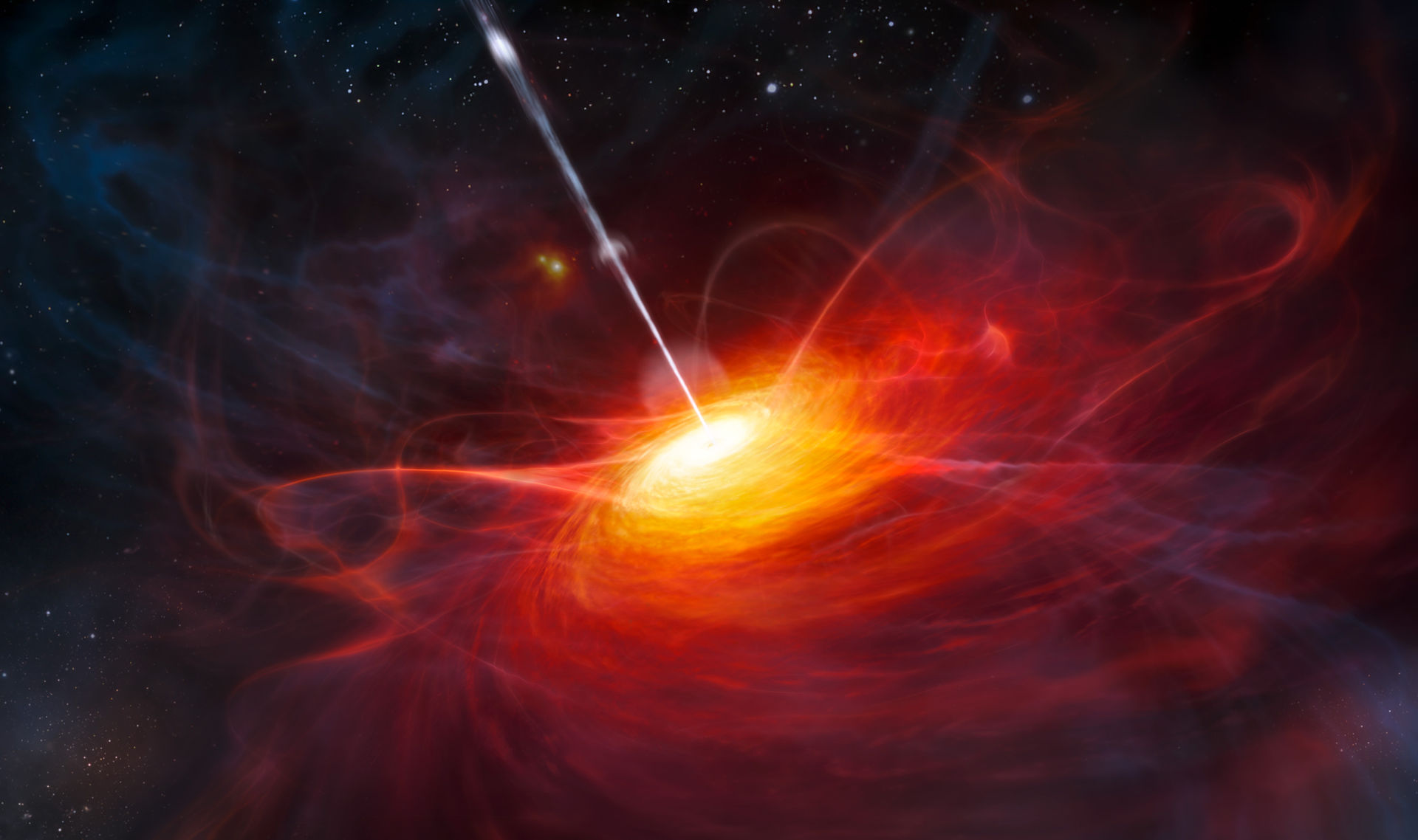Observations obtained by the JCMT helped uncover the Brightest Quasar in the Early Universe!
The light from Quasar J043947.08+163415.7 is gravitationally lensed by a dim Galaxy in the foreground, allowing Fan et al. (2019, APJL: 870, 11) to get a good look at this active galactic nucleus at a redshift of z = 6.51 (A distance of ~12.8 Billion Light years!). As the authors note, “This is the first such object detected at the epoch of reionization, and the brightest quasar yet known at z > 5”.
The JCMT is instrumental in observing distant star-forming galaxies. These galaxies have high concentrations of dust that reprocess the starlight such that it is emitted at infrared wavelengths. The light is then redshifted due to the expansion of the universe into the submillimetre regime. The star formation rate is estimated to be 10,000 times higher than that of our own Galaxy, the Milky Way.
Press Release:
Astronomers uncover the brightest quasar in the early universe
Publication:
The Discovery of a Gravitationally Lensed Quasar at z = 6.51

An artist’s rendering of a distance quasar (Credit: )
A bit of history…
The name “Quasar” is a shortened version of the original designation scientists gave to a mysterious signal we didn’t have a scientific interpretation for: a “quasi-stellar radio source” discovered in 1963 by Maarten Schmidt.
Over decades of intensive studies, astronomers have been able to determine that these mysterious signals were coming from intense bursts of light in the hearts of galaxies far, far away.
Most (maybe all!) galaxies contain a supermassive black hole millions to billions times the mass of our Sun. In some of these galaxies, infalling material gets too close to the black hole and it heats up to millions of degrees, exploding outward in a massive release of energy!
We can detect those signals, which we now affectionately call Quasars, at submillimetre wavelengths with the JCMT.
Congratulations to Dr. Xiaohui Fan and his co-authors !



